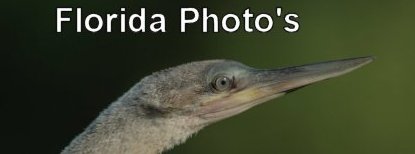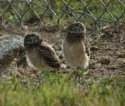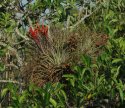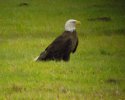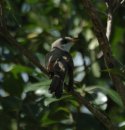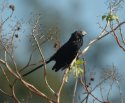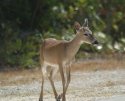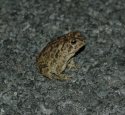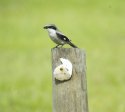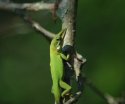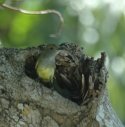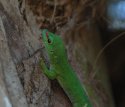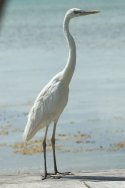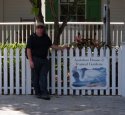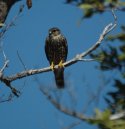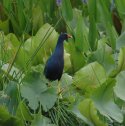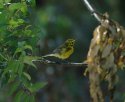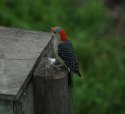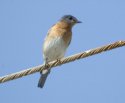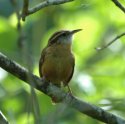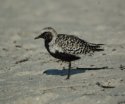|
|
||||||||||||||||||||||||||||||||||||||||||||||||||||||||||||||||||||||||||||||||||||||||||||||||||||||||||||||||||||||||||||||||||||||||||||||||||||||||||||||||||||||||||||||||||||||||||||||||||||||||||||||||||||||||||||||||||||||||||||||||||||||||||||||||||||||
|
If you want to find out all about those Florida Plastic Species check out the separate report Plastic Fantastic 4 - Miami Vice
Introduction.
This trip was a holiday and as such I had to cater for my wife's wishes including some touristy days, during the trip. So there were not many dawn rises or late finishes and no overnight drives. This taken into account would reduce the species we would see but as I have been to Florida before I could target species I needed. All the places referred to are in the Pranty Guide (details at the end of the report) the couple which are not are described in detail in the text, and yes as the title suggests it was hot - very hot every day!
Saturday 18th
We drove south from the airport to Kissimmee our base for a few days, the first of many Osprey was the first bird of note. Our hotel had a pond of sorts hidden behind the car park, it held a killdeer and some mottled ducks. The car park also held northern mockingbirds and mourning doves.
Sunday 19th
A reasonable start and we headed to Merrit Island which I could not visit on my last trip due to a shuttle launch. Here we quickly had good views of Osprey, both grackles, white ibis,ring billed, laughing and American herring gull. We took the Gator creek road and Blackpoint wildlife drives and quickly connected with all the large heron's and egrets, double crested cormorant, anhinga and green heron. Waders were quite numerous, black bellied plover, willet, ruddy turnstone, semipalmated sandpiper, semipalmated plover, lesser yellowlegs were quite numerous, a single greater yellowlegs allowed good comparison with a lesser. A flyover roseate spoonbill was the only one spotted. A bald eagle, common yellowthroat and savannah sparrow the only non waterbirds seen on these drives. We headed for the Manatee viewpoint with both black and turkey vultures eating a dead hog nearby. A couple of Manatee's were present on our arrival and showed well for 20 mins or so. Our next stop was Playlinda beach, where just by the first layby after to pay station we parked up and were immediately investigated by two Florida scrub jays. The other laybys were productive as well, several white pelicans a few roseate spoonbills, the beach was busy – with people but a few birds off shore were mostly northern gannets and laughing gulls. A gopher tortoise was in the car park sand dunes showing nicely. We headed south crossed a few of the bridges over the Indian river but no black skimmers were seen, but we did stop for a pod of Bottlenose dolphins showing down to a few feet.
Our last stop was Viera wetlands, in the general area we had a couple of Sandhill cranes and a Canada goose. The wetlands was excellent, least bittern, several crested caracara, mottled duck, blue winged teal were all present. The highlight was a northern harrier which put up all the birds quite a sight. There was a big egret roost which also held a black crowned night heron. The first amphibian was a bullfrog being eaten by a great egret, it put a fight but the egret won.
Back at out hotel pond cricket frogs were making a racket, they were quite easily located by torchlight but could not be approached.
Monday 20th
An early start and we quickly headed to Joe Overstreet, the road down gave us eastern meadowlarks, Savannah sparrows, Loggerhead shrikes a selection of egrets and herons. The parking at the end of the road was very productive, with crested caracara a family of bald eagles showing very well. A mixed group of vultures feeding on a carcass very close to the car park and confiding grackles and doves. A snail kite was feeding on the edge of the lake and finally a whooping crane was spotted distantly on the shore. The first swallow tailed kite of the trip and some tame sandhill cranes came into the car park. My attention was drawn to a mammal in the field, it came to the car park and up a tree, it was a fox squirrel and a bit timid. The lake itself was not too productive so we headed onto the three lakes wildlife management area a brown thrasher was the first bird seen. We tried for woodpeckers and eventually got a brief view of our target a red cockaded woodpecker but it was the only view, a Northern bobwhite crossed the track as did a gopher tortoise. The lake was quite productive, wood and mottle ducks, our first limpkins of the trip and a selection of ibis, egrets, herons and waders. Finally we got a few smaller birds catbirds and a savannah sparrow. We headed to the watchtower which was well timed with a few spots of rain, the only shower of the trip. We met with a large group of warblers, black and white, a couple of northern parula's, a white eyed vireo, a couple of blue gray gnatcatchers, palm warbler, prairie warbler, blackburnian warbler, cape may warbler, American redstarts both male and female, several common yellowthroats and a cerulean warbler, an amazing sight. Our drive to see the Florida Grasshopper sparrows was halted with the area closed off, we did manage to find a Bachman's sparrow and eastern towhee before headed back. A couple of eastern cottontails on the trip back and a quick stop at Lakefront park where we found the first blue jay of the trip, several muscovy ducks and grey squirrels.
Tuesday 21st
Today was Seaworld day, a concession to my wife, but we took a quick look in Mead park before heading there. It was quite productive with mallards, mottled and wood ducks on the lake. Several turtles, lizards and a good selection of butterflies on our walk round, a Carolina wren and black throated blue warbler along with a Black Racer snake on the boardwalk.
Wednesday 22nd
We left Orlando today and headed to the Gulf Coast our first stop was Hernando Beach where we spent a long time searching the area a flock of cedar waxwings was clearing the trees of berries a few purple martins, barn swallows and chimney swifts and eventually a single budgerigar, but we also had a small flock of probable's. Next stop was Honeymoon island, pulling into the car park a gray kingbird, I lept out with the camera but I needen’t have worried there were at least two dozen around and about. Some lunch followed by a wander, first was a solitary sandpiper on the small pool followed by a blue grosbeak in the picnic area. Next was a Scarlet tanager and several indigo buntings in the picnic area and a common ground dove. The walk along the nature trail was very hot and a great horned owl was keeping out of the sun in the pine trees, My camer lens jammed at 170mm and nothing I could do could free it so the rest of the day was hampered photography wise. Aa pine warbler and a Tennessee warbler were feeding on the trail and a gopher tortoise was wandering down it, a male rose breasted grosbeak showed well. The beach had a few gulls and pelicans but not much else. At Walsingham we were looking for Parakeets, several monk parakeets were nest building in the substation and a couple of black hooded parakeets were around but much more elusive. The last stop was Sarasota where a couple of lakes and ponds held a few black bellied whistling ducks and a couple of forsters terns. I managed to fix my camera lens overnight so was most relieved.
Thursday 23rd
Sanibel had been having good falls of migrants so we got to the lighthouse at dawn in anticipation, but it was not to be and there was not much about the only warblers yellowthroat and ovenbird, we were shown the eastern screech owl hole complete with owl, an American kestrel was the best bird. The beach was a little more productive, sanderling, red knot and dunlin present. On to Ding Darling reserve which was quite busy, we had a good number of waders, both least and western sandpipers, greater yellowlegs both short billed and long billed dowichers, black necked stilt and a marbled godwit. A wide selection of herons and egrets the pick yellow crowned night herons and the white form of reddish egret. We had three racoons all in different parts of the reserve. After some lunch we went to Corkscrew swamp which was very hot and we stocked up on cold water before venturing out of the visitor centre. As the temperature dropped the birds started to appear, several wood storks, swallow tailed kites, pileated woodpeckers, a few cedar waxwings. A barred owl showed well and we saw three or one three times. A Carolina wren, a yellow throated warbler and a black throated and blue warbler and northern parula followed swainson's Thrush the swampy area held both Northern and Louisana Waterthrushs and it was good to see two in close proximity.
Friday 24th
We had a late start and then a bush fire caused a long diversion so we were behind schedule Our fist stop was a tourist one which had a couple of good views of Snail kites.
Mid afternoon we headed for the Pembroke Pines area of South Miami, here we were searching for purple swamphens, but no luck. At nearby Silverlakes no luck either, but here were a good number of Egyptian geese and Muscovy ducks. Some monk parakeets arrived but not much else. We returned to the original site and met a Florida twitcher from much further north also looking for the Swamphens but said that there had been an eradication programme. We could not find them in an extensive search. The twitcher was on his way to Key west for some Megas a yellow faced grasquit and bahama mockingbird. We headed off to the cave swallow site at Cutler ridge where loads were present nesting under the bridge our first Green iguana was found, the twitcher also turned up here and another birder from Canada on a business trip. Onto some fast food restaurants in Homestead, where after a little search several common mynas were found and a Mandarin duck with the feral geese on a small pond, we met the Canadian birder here also and we also arranged to meet up that evening to search for nighthawks at Luck Hammock near the everglades entrance. After some food and checking into our motel we headed down to the hammock, several common nighthawks were present and we had a barred owl fly right over us, despite seeing where it went in the Hammock, it evaded the torches.
Saturday 25th
We got to the Anhinga trail early a couple of photographers already present but not busy at all, all the birds were behaving allowing for good photography and being alligator breeding season they were very active and vocal, the turtles keeping well out of their way. A great blue heron was trying to eat a massive fish eventually getting it down, we did locate a northern water thrush in a muddy ditch. I was after seaside sparrows but their favoured area was dry and the strong wind made it hard to hear anything anyway so we headed on Stopping at the various ponds where the birds were now concentrated. Paurotis Pond which was still full has a massive wood stork colony with a few roseate spoonbills and various herons and egrets for good measure. The lake edge was alive with dragonflies and a brown watersnake, it looked dead but further investigations proved it to be alive so it was given a wide berth. Reaching flamingo for lunch a couple of American crocodiles were quickly found by the marina and a wider search found a mixed wader flock but at distance nothing of great note could be seen apart from approx 100 black skimmers on a sandbar and two wurdemanns herons. Several osprey nests in the car park had young nosily birds in the process of leaving the nest allowing good photo opportunities. The wader flock had moved somewhat closer and a wilson's plover and long billed dowitcher could be picked out from the flock. Eco pond was a mere puddle and only a few black necked stilts inhabited it, but a fly over broad winged hawk was long overdue. The journey back to the visitor centre took in all the same stops and mostly the same birds apart from several flyover swallowtailed kites and a florida softshelled turtle by the side of the road, and we left the park for an early evening meal. Refuelled we headed back to the park for dusk around the entrance we had a large flock of feeding nighthawks and after some persistence eventually located two lesser nighthawks amongst the commons. We drove into the park hoping for some mammals but it was not to be but I did have to stop for a southern toad and an eastern diamondback rattlesnake (which I have wanted to see for sometime). The road was active with chuck will's widows resting and flying round eating some of the pesky mossies that had started to annoy us, and a couple of unknown bats also joined in the feast.
Sunday 26th
We rose early and headed down the Florida Keys, first stop Robbies on Lower Matacombe Key where for a few dollars you can feed the Tarpon (massive fish at the marina) I hand fed them not realising they had rather large teeth until one wanted to eat more than the small bait fish I was holding. We then made several stops for Mangrove cuckoo and black whickered vireo but without success, but we lucked upon a fall of warblers and dozen's passed through mostly the common one already seen but we did get a blackburnian there were loads we missed and a few other species may have slipped out grasp. Grassy Key had a freshwater lake with a good range of common waders, Marathon golf course provided us with a burrowing owl but not much else and eventually on Big Pine key we found some birds but a few indigo buntings, common myna’s and a common yellowthroat was not what was wanted, but I did get a brief view of a Key Deer which the wife missed and a flyover white crowned pigeon. Blue hole is a small lake of fresh water on Big Pine Key, here our first Sora was located but not a great deal else of interest apart from a few common birds. On to Stock Island just before Key West our final destination we easily found several red junglefowl an introduced species before heading into the Botanical garden. Here a Bahama Mockingbird had been seen over the last few days. A mockingbird was singing from a telegraph pole but our attention was got by a birder in the car park who knew nothing about the mockingbird but had just seen a scissor tailed flycatcher, we went to the area but nothing, a good look round and we located several common warblers and indigo buntings. Just as we were giving up the Scissor tailed flycatcher appeared in trees by the car park lake with two gray kingbirds. We headed back there but some non birders with kids beat us to it and the birds had been flushed. We waited for a while watching the bathing indigo buntings and warblers and finding a yellow billed cuckoo which I tried to string into a mangrove cuckoo before heading off. We were met as we reached the car by a warden who told us about the mockingbird who used one of the trails in the garden but sang from the telegraph post in the afternoon – damm! We rushed back and there was the Bahama mockingbird still in place but it was immediately set upon by a northern mockingbird and flew past us into the garden. Well pleased with our luck we headed to Fort Zachary to look for the yellow faced grassquit. It was busy being a Sunday but we found the nature trail and a few birders, it had been incredibly elusive and only seen a once or twice each day. We had a look round anyway and paid particular attention to a small water fountain which was being visited by a variety of birds. Indigo buntings, black throated blue , palm, prairie, blackpoll, black and white, cape may, hooded and worm eating warblers, American redstart, northern parula and common yellowthroats, an excellent cast, supported by swainson’s and wood thrush, but no grassquit, one birder had put in 30 hours and only seen it a couple of times. Dusk was approaching so we headed to the airport for Antillean nighthawk but no luck, apparently there have not been any this year to this point in time here or at other sites in the keys.
Monday 27th
A real early start to get to the Key West marina for 7.30 only to be told our trip to the Dry Tortugas was cancelled, but a larger boat was probably going so we headed there and indeed it was going, but the weather was going to get a little rough, but we went anyway. The trip out was very quiet birdwise the sea quite calm but strengthening winds as we went, someone claimed a tropicbird but most of us had seen the same bird which was a royal tern, (I did see a tropicbird on this trip a few years ago with many other observers). As we neared the Tortugas, the birds started coming mostly royal, sooty terns and brown noddies, and a couple of bottle nosed dolphins, but we did have flypast brown boobies. On arrival at Garden Key I took a look at the magnificent frigatebirds holding station above the fort, then the tern colony (I could not pick out the black noddy which was present) but a parasitic jager was on the beach looking for egg stealing opportunities and a peregrine falcon was present hunting and causing a commotion in the colony. I started birding the fort gardens quickly picking up a merlin and a while later a sharp shinned hawk. Migrant wise it was a little quiet but a few warblers were present around the water fountain. A couple of birds had not been luck arriving here as a gray catbird and a thrush were lying dead in the fort. Time for some snorkelling in the warm clear water produced some excellent fish including a large barracuda but the underwater camera battery died and we had no spares with us damm!. Time for lunch and in the bush next to us was an orchard oriole. Another look round the fort produced the same birds. I was alerted to a fruit feeding station a birder had set up so went to take a quick look before we left (departure had been brought forward due to weather) a white eyed vireo was present a few warblers and catbirds but I could not find the black whiskered vireo seen earlier but some. Time to leave and the captain had been asked by several of us if we could pass middle key where this year the booby colony had moved to. He obliged and took us in for a quick look, stopping for a few mins to see the brown boobies and masked boobies present. We headed off into strengthening winds and choppier seas. A leatherback turtle was spotted but we were moving too quickly for a photo and an Audubon shearwater passed by but now the boat was rolling and pitching and my lunch was ready to return, I moved to the back of the boat and delayed the inevitable a bit but lunch was up. My chumming did not attract any more shearwaters not that I was in a position to watch them. Thankfully dry land arrived and back on terra firma I was almost instantly fine and quite hungry.
Tuesday 28th
Another concession day absolutely no birding as we had a lie in and took a touristy and relaxing day in Key West. I was allowed to check out the Audoubon house bookshop, (I visited the house on my last trip).
Wednesday 29th
An early start and we were quickly on summerland key where black whiskered vireo was quickly found followed by a couple of others on my walk which produced the common warblers, white crowned pigeon and eventually a mangrove cuckoo. A lower keys marsh rabbit was feeding by the side of the road and another flyover white crowned pigeon before we headed further up the keys.
A look blue hole produced an amazing fish sp large and bright red, and the only belted kingfisher of the trip, still no key deer and this was now our major task, I saw one in the rear view mirror but the wife missed it so we searched further about 30 mins later we found a photogenic key deer on no name key. Back to grassy key lake where we finally found the white form of the great blue heron and also two white form reddish egrets, also we had a couple of western sandpipers amongst the wader flock. A touristy stop produced a copuple of giant day gecko's and a peacock, we could not locate any yellow warblers. Popping into the Bird hospital we got close-up views of some residents and patients the highlights roseate spoonbill and brown booby. Loads of herons and egrets including white heron were hanging around for the pelican feeding hoping to get a free meal.
Early evening we headed to a South Miami parrot roost site Miller Drive (none roosted) but we had a couple of yellow chevroned parrkeets feeding in a nearby tree. Hill mynas were noisly harassing the blue jays and we had a brief perched white crowned pigeon As we watched the muscovy ducks with ducklings the parrots started to fly over. We have several species mostly Red Masked Parakeets, but several White fronted parrots, blue fronted parakeet and a single lilac crowned parrot. A quick look at the Fuch's park roost was also parrotless.
Thursday 30th
After a look at some burrowing owls at Miami Kendall airport, a family of five showed really well. We went back to south Miami to try for spot brested orioles and red whisked bulbuls at the Royal Palm tennis courts. But an extensive search drew blank. Onwards to Mattherson Hammock park where also drew blank apart from several Iguana's. Several other local sites also produced blank so we headed to Hialeh Park which houses about 500 Caribbean flamingo's. It is closed to the public but the gates were open and I headed in. I could not see or access the flamingo lake so went into the office and asked about access, NO was the official answer but I was walked round the office area given a history of the site and a brochure as we walked away from some mangers and then quickly and distantly shown the lake with its Caribbean flamingo's. No photo's the condition of the detour, but at least I had finally seen something today. We headed to Miami springs where we found several monk parakeet nests well attended. A lone yellow chevroned parakeet flew over but not much else. Back to this mornings Tennis court area where we quickly found a red whiskered bulbul which showed quite well and we had another briefly, still no oriole but a trawl of a couple sites did not produce anything apart from a red crowned parrot and orange winged parrot flyovers. Trying a new roost and the others from last night only gave a few flyover parrots of the same species previously seen and more noisy Hill Mynas. Finding a roost is essential to get the most species. We drove to Fort Lauderdale for the night, booking into the Motel 6 at Dania Beach a sign on the wall caught my attention. It said not to feed the Green Vervet Monkeys – most interesting!
Friday 1st
I awoke at dawn and walked the grounds in search for the Monkeys. A photographer stopped me and showed me his feeding station saying that he had had success earlier in the week. We viewed from the cars as the no see em's (tiny biting insects almost invisible until the land on you) we hungry. The dustcart arrived and emptied the bins, I thought putting an end to our viewing, so I thought. When one of the bin men, took out his mobile phone and took a few pics behind the bins. The truck left and it was not long before we had success two Green Vervet Monkeys coming to the Banana's, they were quite timid but allowed a few pics before heading up the tree to eat. There are several stories of their origins, they came from Tarzan filming, a pet store that burnt down, a failed attraction or from a research lab. Dawn and Dusk are the best times here, but in further correspondence from the photographer they are quite easy near the airport. The next stop was a site for smooth billed ani, a bird that has eluded me before and is not incredibly scarce in Florida, but within minutes of arriving at the site I had one it stayed briefly allowing a couple of photos, why can't all birds be this easy?
We headed on and tried a site for parakeets but no luck before heading to Wakodahatchee, this was an amazing place the animals breed right next to the board walk and we had good views of tricoloured heron and eggs as the mother moved about the nest, red winged blackbird and eggs, and loads of young birds in nests, great blue herons newly hatched, moorhens, mottled ducklings and excellent views of marsh rabbits, iguana's, black bellied whistling ducks, sora, purple martin nest boxes complete with martins and a few bank swallows and loads more don't miss this site it is excellent. We spent quite some time here before needing some cold drinks and headed off. We took a quick look in a new facility nearby called Green Cay Nature reserve it was very similar to Wakodahatchee and was returned to wetland from a pepper farm, the birds were similar but there were a few wood hammocks that had lots of lizards we did get nice views of young limpkins, purple gallinule chicks and loads of turtles and a wood stork which the staff seemed sceptical of until they saw the photos. The visitor centre was a good place to cool off and had cold water to drink. Our final stop was Loxahatchee. A larger and different dryer wetland. Not a large number of birds around and some areas were closed but we had a good walk around finding a cricket frog and florida watersnake snake a few monk parakeets and a snail kite. We headed north for the night.
Saturday 2nd
A later start than planned and we arrived at Viera wetlands for a morning look, but we had missed the key part of the morning and less birds were present than our evening visit what seemed like weeks before. But we still saw lots of birds close up and in particular a pair of sandhill cranes complete with a very young chick which showed very well. We moved on to Jetty park marina again for parakeets but the place was packed with beachgoers and nothing to be seen but we had a spot of lunch. The final stop was Orlando wetlands where reports of two bobcats that morning got us going but we could not locate them in the afternoon heat, a racoon was more helpful feeding in the reeds 6 feet from us. All the usual wetland birds were present and we got some great views of reddish egret and little blue herons amongst others and finally managed to see one of the many sedge wrens making so much noise in the reeds. We headed to the airport, on the side of a busy road on the way two sandhill cranes were trying to cross with two youngsters probably a couple of weeks old - hope they made it.
Considering this was a much more laid back trip than my usual efforts it was a great trip and we only missed a couple of possible species.
Birds 167
Pied Billed Grebe Audubon's Shearwater American white pelican Brown Pelican Magnificent Frigatebird Masked Booby Brown Booby Northern Gannet Anhinga Double Crested Cormorant Least Bittern Great Blue Heron (GBH) Wurdemann's Heron (GBH from) White Heron (GBH form) Great Egret Snowy Egret Cattle Egret Reddish Egret Little Blue Heron Tricoloured Heron Green Heron Black Crowned Night Heron Yellow Crowned Night Heron Glossy Ibis White Ibis Roseate Spoonbill Wood stork Canada Goose Black Bellied Whistling Duck Wood Duck Muscovy Duck Mallard Mottled Duck Blue Winged Teal Black Vulture Turkey Vulture Osprey Swallow Tailed Kite Snail Kite Sharp Shinned Hawk Northern Harrier Red Shouldered Hawk Broad Winged Hawk Red Tailed Hawk Bald Eagle Crested Caracara American Kestrel Merlin Peregrine Falcon Common Peafowl Wild Turkey Northern Bobwhite Sora Moorhen Purple Gallinue American Coot Limpkin Whooping Crane Sandhill Crane Black Bellied Plover Kildeer Semi Palmated
Plover Black Necked Stilt Greater Yellowlegs Lesser Yellowlegs Solitary Sandpiper Willet Marbled Godwit Ruddy Sandpiper Sanderling Red Knot Dunlin Semi Palmated
Sandpiper Western sandpiper Least Sandpiper Long billed Sandpiper Short Billed Sandpiper Laughing gull Ring billed Gull American Herring gull Royal Tern Forsters Tern Least Tern Sooty Tern Brown Noddy Black Skimmer Rock Dove White Crowned Pigeon White Winged Dove Mourning Dove Common Ground dove Collared Dove Blue Crowned Parakeet Monk Parakeet Black Hooded Parakeet Red Crowned Parrot Lilac Crowned Parrot White Fronted Parrot White Chevroned
Parakeet Mangrove Cuckoo Yellow billed Cuckoo Smooth billed Ani Eastern Screech Owl Great Horned Owl Barred Owl Burrowing Owl Common Nighthawk Lesser Nighthawk Chuck will willow Chimney Swift Belted Kingfisher Rd Bellied Woodpecker Downy Woodpecker Red Cockaded Woodpecker Pileated Woodpecker Great Crested Flycatcher Eastern Kingbird Gray Kingbird Scissor Tailed Flycatcher Loggerhead Shrike White Eyed Vireo Black Whiskered Vireo Yellow Throated vireo Blue Jay American Crow Fish Crow Cave Swallow Barn Swallow Bank Swallow Purple Martin Sedge Wren Blue Gray Gnatcatcher Eastern Bluebird Swainson's Thrush Gray Cheeked Thrush Hermit Thrush Wood Thrush Gray Catbird Northern Mockingbird Brown Thrasher Cedar Waxwings Starling Common Myna Hill Myna Red Whiskered Bulbul Blackburnian Warbler Black throated blue warbler Palm Warbler Pine Warbler Prairie Warbler Blackpoll warbler Yellow Throated Warbler Black and white warbler American redstart Worm eating warbler Common yellowthroat Northern waterthrush Ovenbird Hooded Warbler Scarlet Tanager Blue Grosbeak Rose Breasted Grosbeak Indigo bunting Northern Cardinal Eastern Towhee Bachmann's Sparrow Orchard Oriole Eastern Meadowlark Red winged Blackbird Common Grackle Boat Tailed Grackle Brown Headed Cowbird House Sparrow Bahama Mockingbird Budgerigar Egyptian Goose Red Masked Parakeet Reddis Egret (White
Form) Cerrulean Warbler Tennessee Warbler Parasitic jager Red Junglefowl Mammals and Herps 35 Manatee Eastern
Gray Squirrel Fox
Squirrel Racoon Armadillo Mouse
sp White
Tailed Deer Key
Deer Green
Vervet Monkey Marsh
Rabbit Eastern
Cottontail Lower
Keys Marsh Rabbit Bottlenosed Dolphin Brazilian
Freetailed Bat Green
Anole Loggerhead
Turtle Green
Iguana American
Alligator American
Crocodile Gopher
Tortoise Eastern
Diamondback rattlesnake Black
Racer Leatherback
Turtle Giant
Day Gecko Brown
Watersnake Pig
Frog Bullfrog Chicken
Turtle Yellow
Bellied Slider Brown
Anole Insects 31
Monarch Great Southern White Black Swallowtail Little Wood Satyr Dainty Tropical Chequered Skipper White Peacock Gulf Fritillary Giant Swallowtail Meridean Duskywing Clouded Queen Danaus Eastern Tiger Swallowtail Zebra Longwing Common Buckeye Eastern Pygmy-Blue Regal Darner Blue Dasher Southeastern Lubber
Grasshopper Scarlet Skimmer Roseate Skimmer Rambur's Forktail Metallic Pennant Little Blue Dragonlet Halloween Pennant Golden Winged Skimmer Great Pondhawk Four-spotted Pennant Regal Darner |
||||||||||||||||||||||||||||||||||||||||||||||||||||||||||||||||||||||||||||||||||||||||||||||||||||||||||||||||||||||||||||||||||||||||||||||||||||||||||||||||||||||||||||||||||||||||||||||||||||||||||||||||||||||||||||||||||||||||||||||||||||||||||||||||||||||



